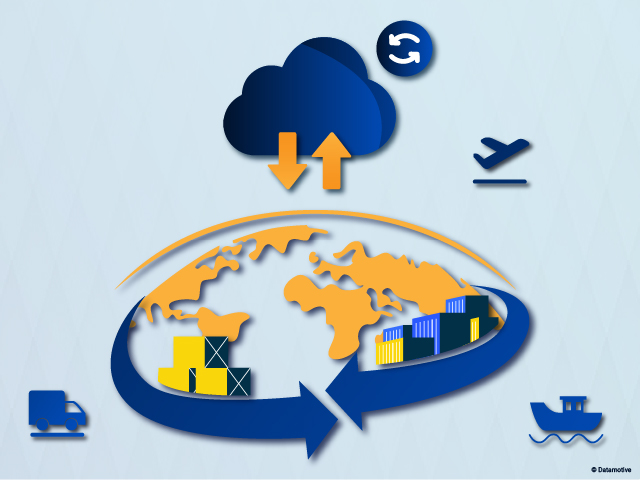It can be said that today’s world runs on a dynamic global economy, and manufacturing businesses face a multitude of challenges that can disrupt their supply chains. From natural disasters and geopolitical instability to pandemics and cyberattacks, these disruptions can have a significant impact on production, delivery, and ultimately, a company's bottom line. To mitigate these risks, manufacturers are increasingly focusing on building supply chain resilience and implementing robust disaster recovery plans.
What is Supply Chain Resilience?
Supply chain resilience is defined as the supply chain's capability to foresee, prepare for, respond to, and recover from any unforeseen disruptions. Such disruptions range from natural disasters to pandemics, to geopolitical instability, and cyberattacks. Supply chain resilience entails identifying potential risks, developing mitigation solutions, and establishing a constant cycle of monitoring and adaptability.
Supply Chain Resilience: Key Components
Supply chain resilience has moved beyond the conventional bounds today. It operates mostly on real-time data, predictive analytics, and advancing technology. By deploying artificial intelligence, blockchain, and IoT applications, companies can enjoy unprecedented visibility into their supply chains, predict shutdown problems, and respond outside the norm to unanticipated events. These include:
- Real-time shipment tracking: The use of technologies such as GPS, RFID, and other systems to track the location and movement of products in real-time, enabling quick identification of slowdowns or disruptions.
- Predictive maintenance for equipment: The application of artificial intelligence and IoT sensors to forecast equipment failures and intervene with maintenance before downtime occurs.
- AI-driven risk evaluation: AI algorithms are used to scan huge data such as weather patterns, geopolitical events, and supply chain data to pre-emptively identify and rank potential risks.
- Blockchain technologies: Improving the transparency and traceability of the supply chain, ensuring stakeholders work with limited trust.
Disaster Recovery Planning in Manufacturing
Comprehensive disaster recovery planning outlines the steps a company must take to minimize the effects of a disruptive event and restore operational continuity as quickly as possible. Key elements of the disaster recovery plan include:
- Cloud solutions: Cloud services are used for backup and recovery of data and applications from storage to assure business continuity systemically.
- Automation and orchestration: Automating critical recovery procedures like data replication, system provisioning, and application failover reduces downtime and speeds up recovery time.
- Supply chain cyber security: These days, when cyberattacks pose a deadly hazard to business continuity, robust cybersecurity measures can provide protection.
- Regular testing and simulations: Regular fire drills and simulations help apply changes to improve the execution of the disaster recovery plan.
Benefits of Supply Chain Resilience and Disaster Recovery
Resilient supply chains enhance business continuity, minimize financial losses, improve customer satisfaction, and provide a competitive advantage.
- Reduction of financial losses: Reducing the financial risks involved when disruptions occur, which include lost revenue, production delay, and property damage.
- Customer satisfaction: Trust and loyalty are preserved when products and services are delivered on time.
- Good reputation: Showing commitment towards business continuity and resilience can help build a reputation for the company and create more customers.
- Competitive advantage: This readiness gives an edge in competing as interference would be managed more effectively, enabling opportunities.
Challenges in Building Supply Chain Resilience
Building resilience requires significant investments, navigating complex global networks, ensuring data visibility, adapting to dynamic environments, and overcoming internal resistance to change.
- Cost: There is often a huge financial burden involved when resilience measures are put in place which range from investment in technology, inventory, and alternative resources.
- Complexity: It requires a huge degree of coordination, communication, and expertise to manage a complex global supply chain.
- Transparency: Lack of transparency into the entire supply chain will inhibit appropriate cyber supply chain risk management and response.
- Dynamic environment: The ever-changing global landscape is giving rise to new and unpredictable challenges, making it difficult to detect every risk and thus supply chain risk management framework is required.
- Resistance to change: Resistance to change on the part of the organization can be such a barrier to the conferring of new resilience strategies and supply chain risk management strategies.
How Datamotive Can Help with Supply Chain Resilience and Disaster Recovery
To build a resilient and disaster-proof supply chain, robust technology solutions are required. Datamotive enables manufacturing companies to achieve this through its innovative cloud-based DR (disaster recovery) solution, EasyHybridDR, that is specifically designed for hybrid cloud environments.
Datamotive’s EasyHybridDR provides comprehensive solutions to manufacturing DR challenges:
- Reduced downtime: Achieve recovery time objective (RTO) of 10 minutes ensuring easy return post disruption without costly delays.
- Reduced operational costs: Datamotive helps reduce the TCO by 60%―a boon for the operational budgeting.
- Data security: A real boon for cloud-based data management and supply chain risk management companies, as cloud ensures data consistency and data replication. It minimizes the risk of the data being endangered due to potential cyber threats or data breaches.
- Streamlined IT operations: Automating disaster recovery processes is the way to go. Minimize the IT resources’ workload further to focus on core manufacturing operations.
- Improved regulatory compliance: Compliance with the regulations such as FDA, ISO, and so on along with the seamless replication to cloud intending to minimize regulatory risks.
By combining Datamotive's EasyHybridDR with a complete disaster recovery plan plus pioneering supply chain resilience strategies and supply chain risk mitigation strategies, manufacturers may experience both enhanced stability to disruptions and increased ability to maintain business continuity.
Datamotive also helps in terms of cloud migration or transitioning the supply chain operations of manufacturing companies to the cloud to maintain agility and increased resilience.
